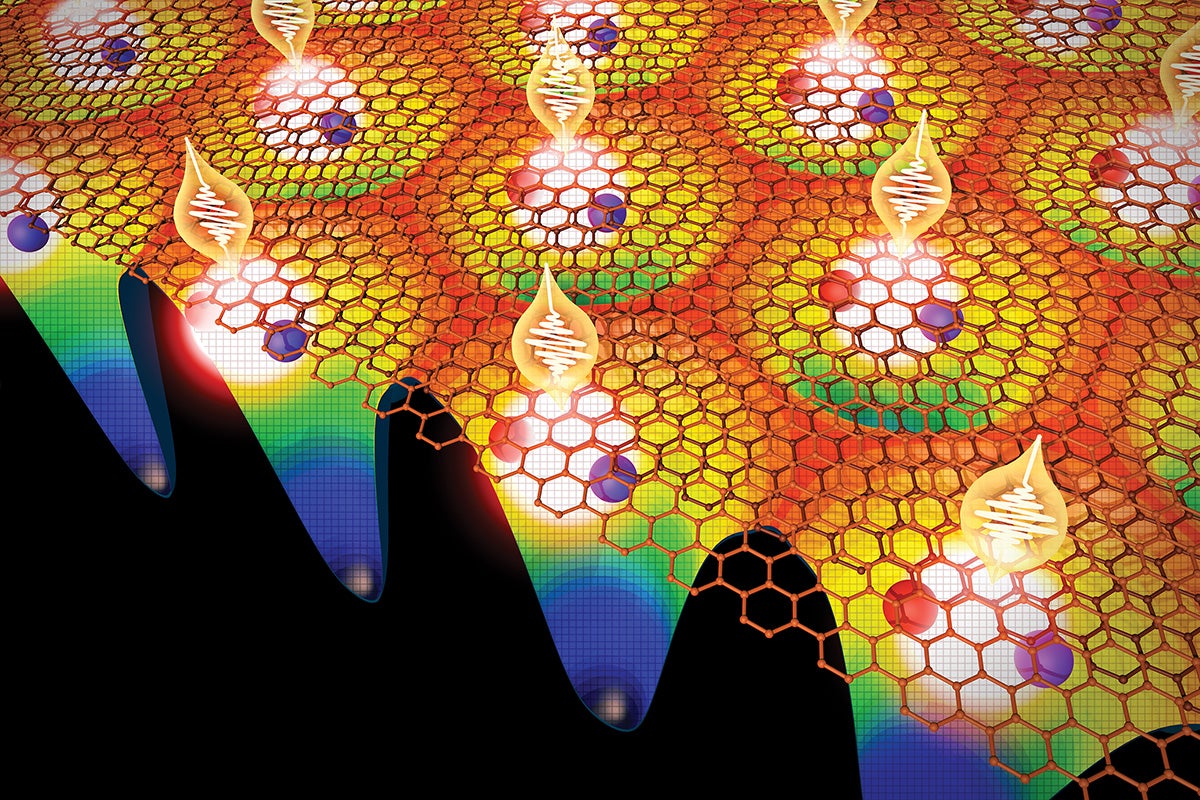Promising Drug Candidate Reduces Inflammation, Chronic Pain in Mice
Ken Hsu and collaborators are working towards a non-addictive painkiller using a novel way to shut off inflammation.

An artistic depiction of energy metabolism in cells which is also regulated by diacylglycerol lipase-beta to reduce inflammation and pain. Credit: Ken Hsu, using the program IMAGINE.
Chronic pain afflicts millions of people, but for many, a reliable, non-addictive drug to ease their suffering remains out of reach. Some of the most effective drugs for treating severe pain, opioids, are highly addictive and have led to public health crises of drug abuse and overdoses.
Ken Hsu at The University of Texas at Austin and colleagues at UT Austin, Virginia Commonwealth University (VCU) and the University of Virginia have made progress towards developing a safer treatment for chronic pain. According to a study published in Proceedings of the National Academy of Sciences, the team’s new drug candidate effectively tricked the immune system in mice in such a way as to shut off an inflammatory response, thereby alleviating pain.
The researchers’ ultimate goal is to make an effective and targeted treatment for people suffering from chronic pain.
Immune cells in your body produce compounds called cannabinoids that, among other things, regulate inflammation. In a healthy person, inflammation is a process that helps the body heal from infections or injuries. But the downside is that it also causes swelling and buildup of tissue that presses on nerve endings and causes persistent pain.
The researchers used an inhibitor, KT109 — which Hsu developed in 2012 as a postdoctoral fellow at The Scripps Research Institute — to block the activity of a cannabinoid-producing enzyme in immune cells called DAGLβ.
The inhibitor was found to reduce inflammation and associated pain in mice, when tested by long-term collaborators at VCU. Hsu demonstrated how the inhibitor controls inflammation via cannabinoids and prostaglandins when originally developing it. But in this latest study, researchers were surprised to discover that it also controls inflammation through an additional pathway, which helps explain why the inhibitor is effective treating different types of pain in the mice.
“When you inhibit DAGLβ, your immune cells are tricked into thinking they are starving,” said Hsu, an associate professor in the Department of Chemistry. “Changes in energy metabolism in the immune system can turn off inflammatory signaling and be effective in pain management. One example is the drug metformin that has been shown to be effective in pain.”
The team’s inhibitor targets DAGLβ, which is mainly present and active in immune cells, thereby avoiding any unnecessary reaction with other cells that might lead to side effects.
“You’re going to affect these pathways where it matters, where the inflammation is happening,” Hsu said.
Hsu said he and his team don’t believe this drug inhibitor enters the brain, thereby avoiding the potential alteration of reward pathways in the brain that might lead to substance abuse. The National Institute on Drug Abuse was among the funders of the research.
Hsu and his team have so far only treated mice by injecting the inhibitor. But he said a goal is to develop a pill for the mice to swallow — as a human would ingest a drug compound. To avoid internal toxicity, researchers will aim to refine the chemistry and reduce the number of times the mice take the medicine while still maintaining the same pain-easing effect.
Hsu’s findings are helpful for pharmaceutical companies considering the development of medicines that target DAGLβ in people experiencing chronic pain.


